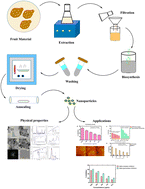Phyto-fabrication of ultrafine nanoscale holmium oxide HT-Ho2O3 NPs and their biomedical potential
Abstract
In this study holmium oxide nanoparticles (Ho2O3 NPs) are fabricated using Hyphaene thebaica extracts as a bioreductant. The XRD pattern of HT-Ho2O3 NPs (product from phyto-reduction) suggested that the nanoparticles are crystalline with no impurities. Scherrer approximation revealed grain sizes of ∼10 nm. The HR-TEM revealed HT-Ho2O3 NPs possessed a quasi-spherical morphology complemented by SEM and the particle sizes were in the range of 6–12 nm. The infrared spectra revealed characteristic Ho–O bonding at ∼603 cm−1. Raman spectra indicated five main peaks positioned at 156 cm−1, 214 cm−1, 328 cm−1, 379 cm−1 and 607 cm−1. Eg (optical bandgap) was found to be 5.1 eV. PL spectra indicated two major peaks at 415 nm and 607 nm. EDS spectra confirmed the elemental presence of holmium (Ho). Spotty rings were obtained during the SAED measurement which indicated crystallinity of HT-Ho2O3 NPs. The HT-Ho2O3 NPs were further analyzed for their antioxidant, anti-angiogenic and cytotoxic properties. The antioxidant potential was moderate i.e., 43.40 ± 0.96% at 1000 μg mL−1 which decreased in a dose dependent manner. Brine shrimp lethality was highest at 1000 μg mL−1 with the LC50 320.4 μg mL−1. Moderate anti-angiogenic potential was observed using in ova CAM assay. MTT bioassay revealed that the HT-Ho2O3 NPs inhibited the 3T3 cells (IC50 67.9 μg mL−1), however, no significant inhibition was observed against MCF-7 cells. α-Amylase and β-glucosidase inhibition revealed that the HT-Ho2O3 NPs can be of use in controlling blood glucose levels. Overall, it can be concluded that biosynthesis using aqueous extracts can be a suitable alternative in finding ecofriendly paradigms for the synthesis of nanoparticles. We suggest extended research into the bioreduced Ho2O3 NPs for establishing their biomedical potential and toxicity.



 Please wait while we load your content...
Please wait while we load your content...